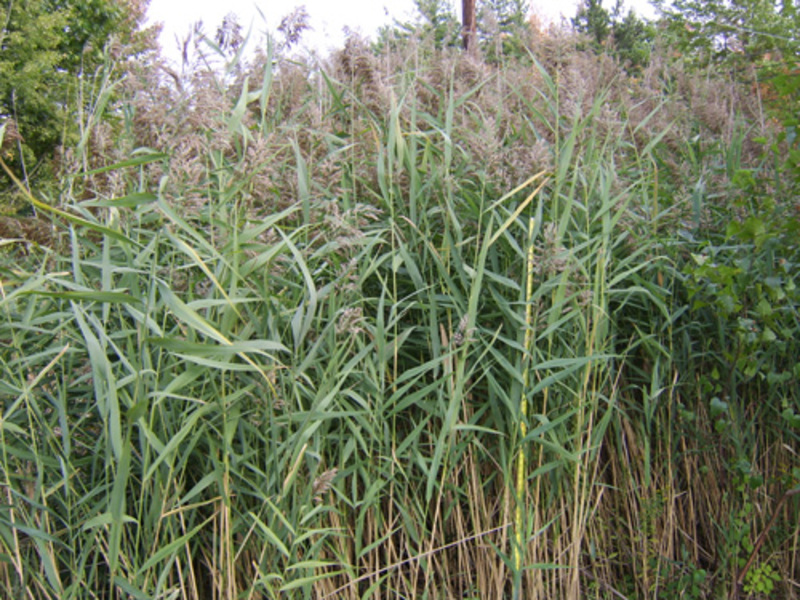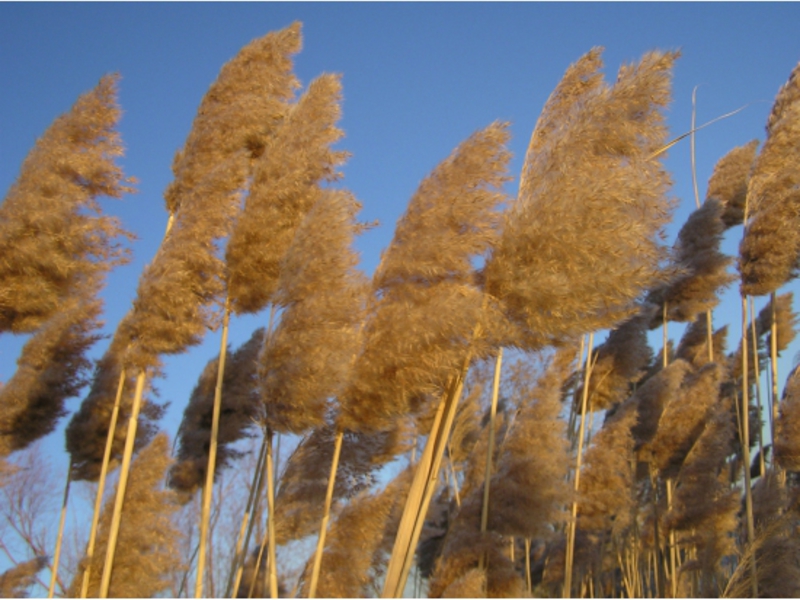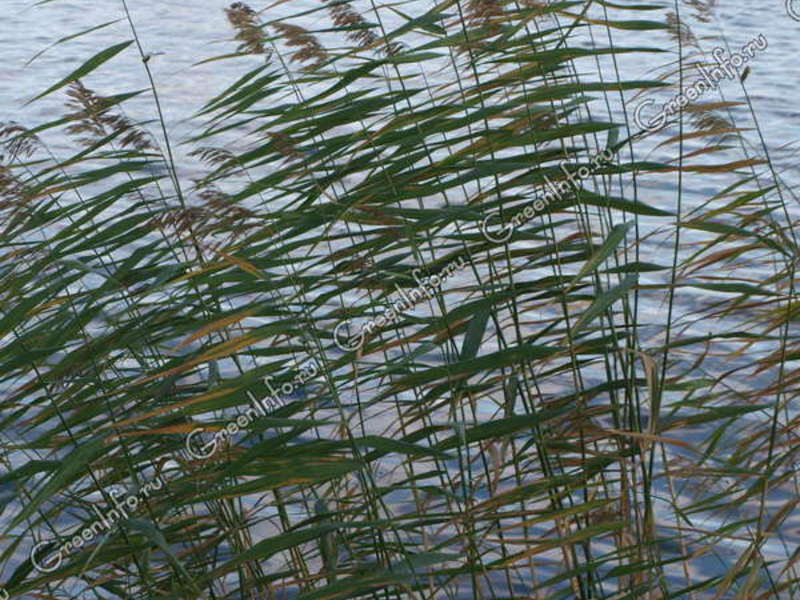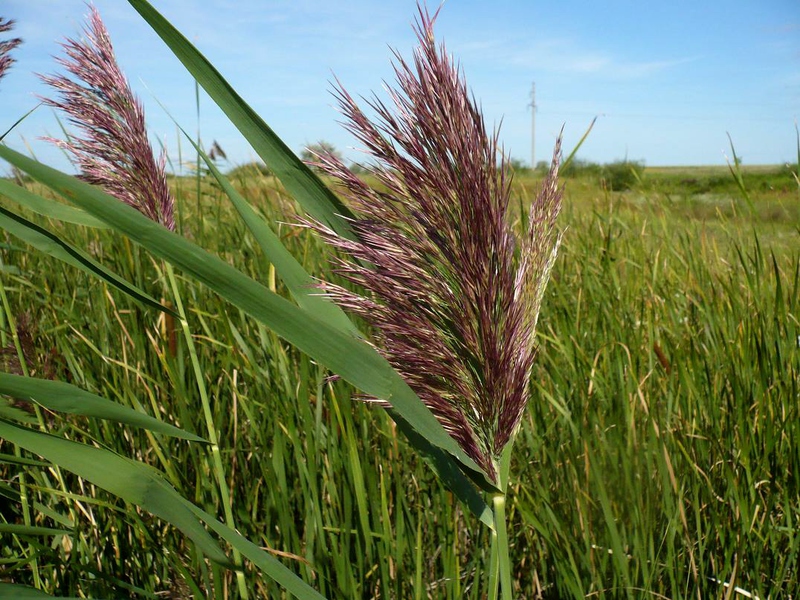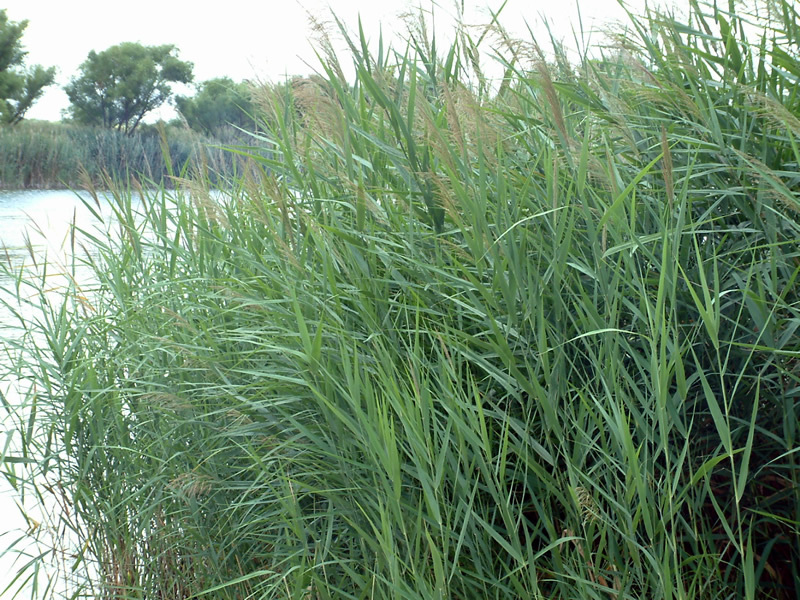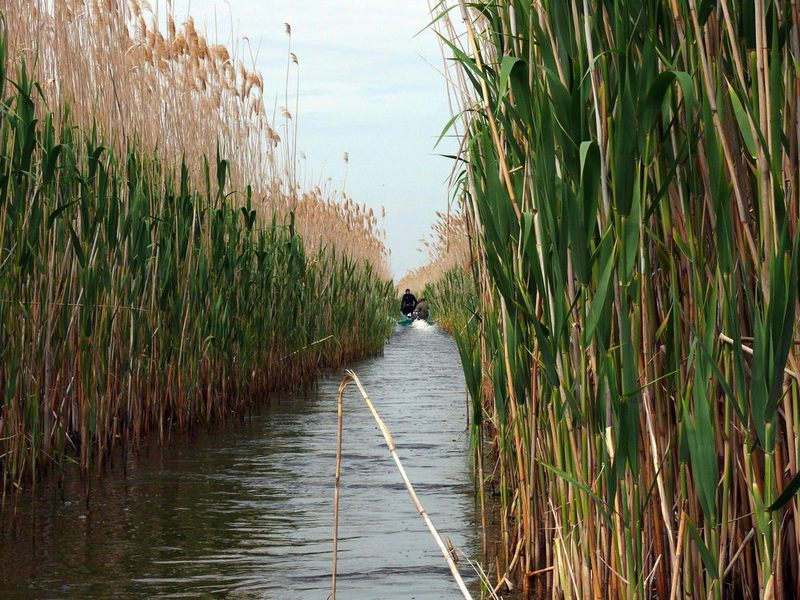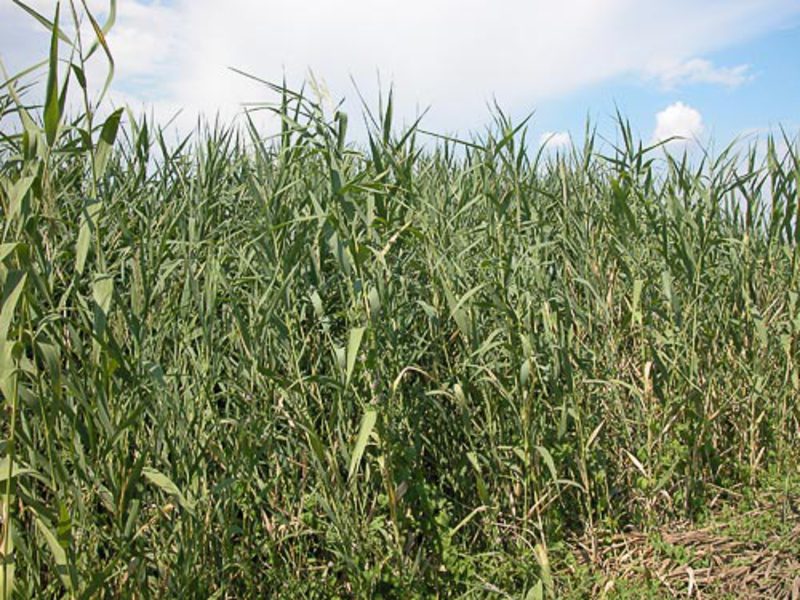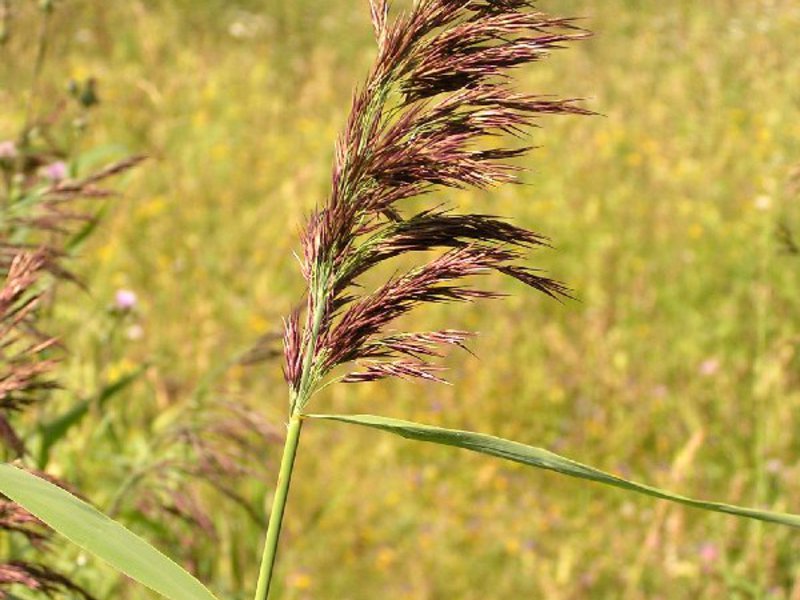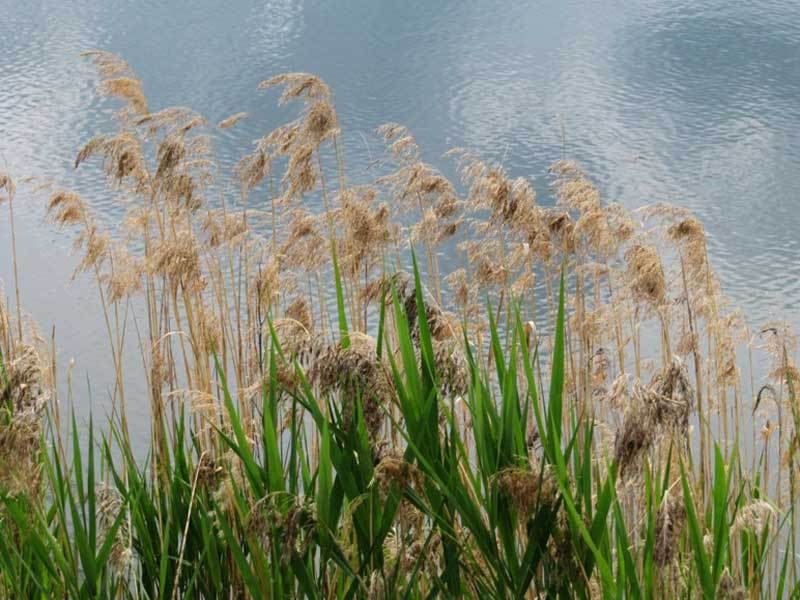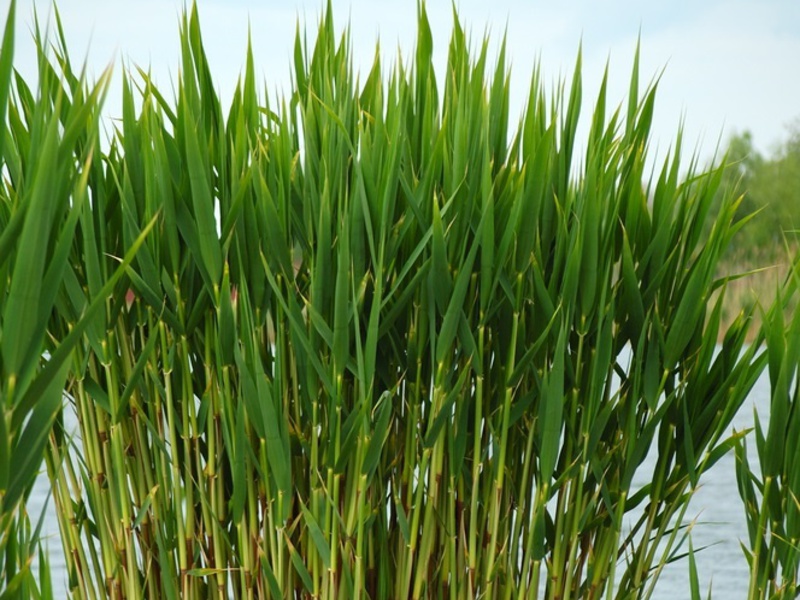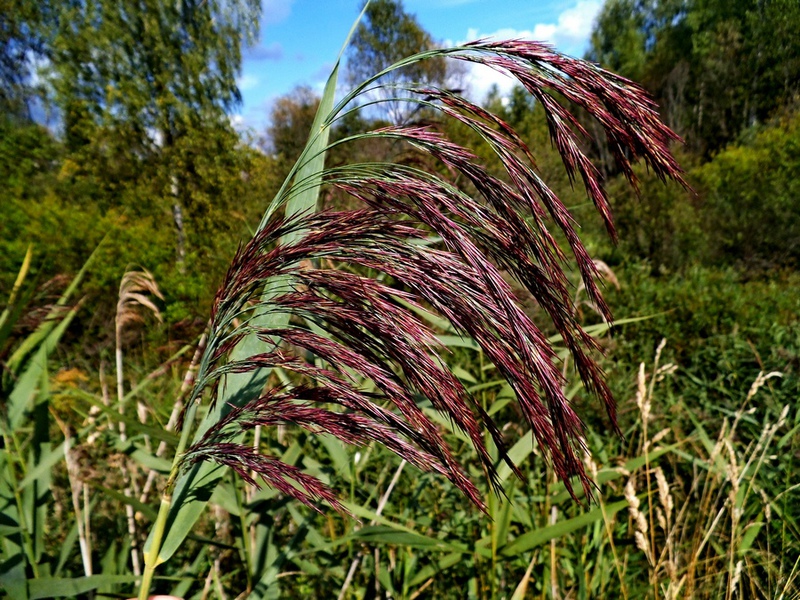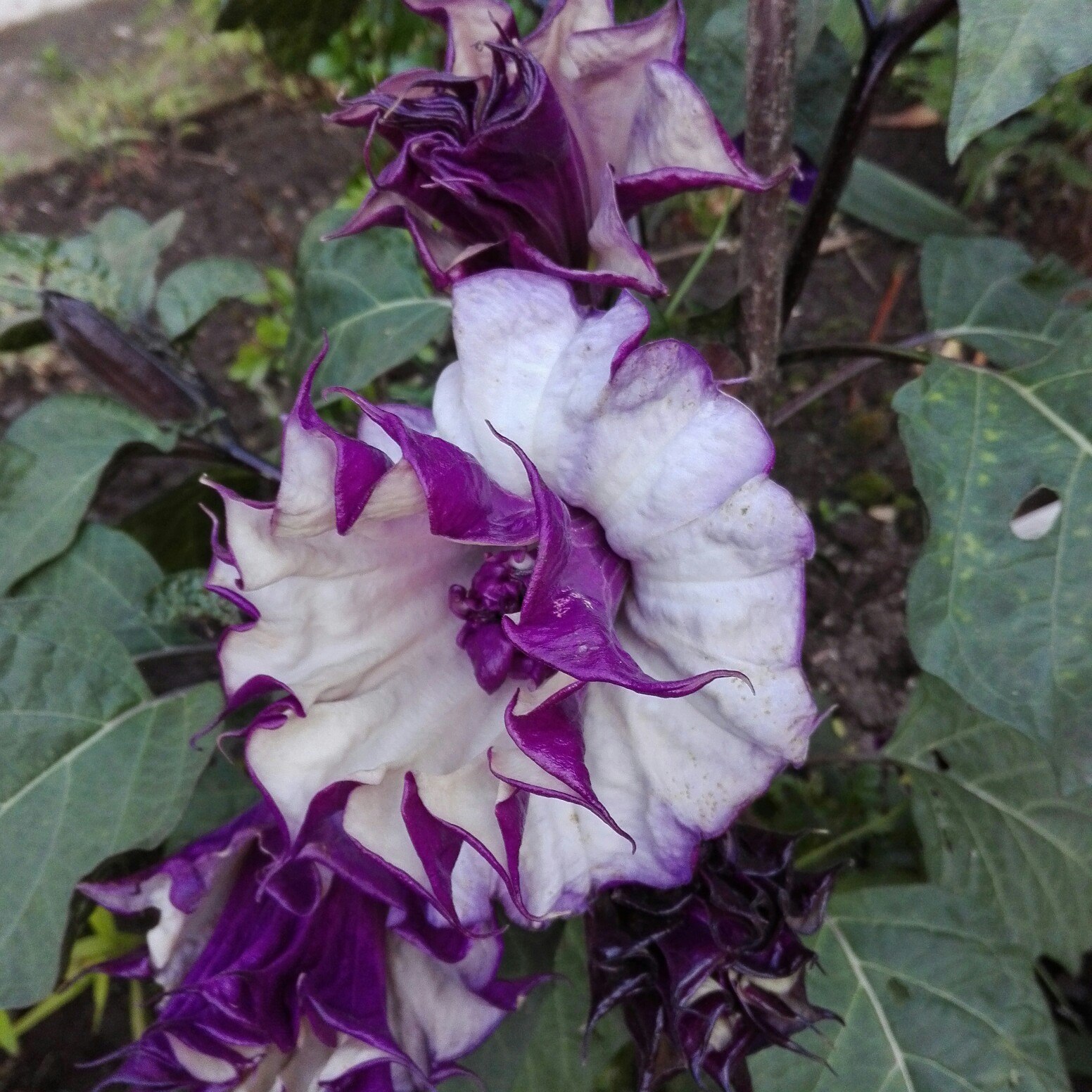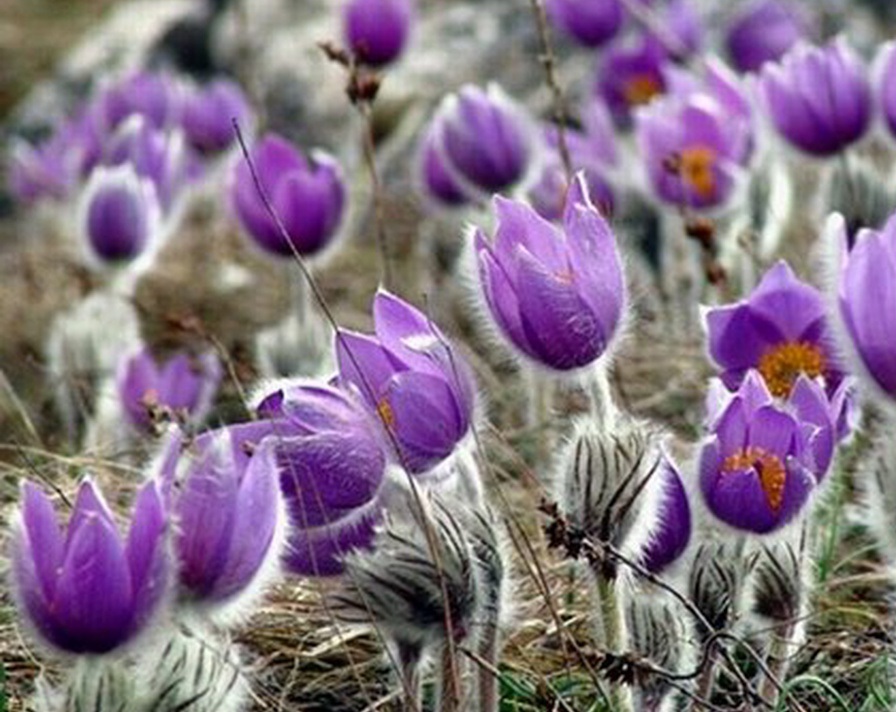The common reed is widespread absolutely everywhere. The only exceptions are the areas of deserts and the Arctic. In height, this perennial representative of the flora reaches five meters, and the stem, hollow inside, has a width of up to two centimeters. Stem lignification occurs after the flowering period. Reed leaves are linear-lanceolate, elongated with cutting edges, have a gray-green color. The stems have high flexibility, so that even under gusts of strong winds they never break, but bend to the very surface of the water.
The inflorescence is a large fluffy a purple or silver panicleconsisting of many small spikelets. Common reed is pollinated by the wind, blooms from July to September. Ripening of caryopses occurs from August to September, but for a long time they remain on the plant and attract attention with their silvery-brownish sultans. In winter, the common reed is covered with a blanket of snow, which gives it and the reservoir around which it grows, a majestic, cozy look. The loud, rustling noise emanating from the thickets of this plant is impossible not to recognize.
Significance in ecology
The plant has long, strongly growing rhizomes that constantly conquer new territories. This is how the common reed reproduces. Its dense, impenetrable thickets are of great importance from an ecological point of view. Germinating in swamps, this plant gradually dries them out, turning into dry soil... Due to the many thick stems and leaves, a huge amount of water from the earth layer is absorbed by the reed, after which it evaporates. Peat is also formed with the help of common reed. At the same time, this plant serves as a nutritious food for many animals such as: livestock, moose, nutria and muskrat.
Application in economic activities
The use of cane in the economy is widespread wherever it grows. Baskets, mats, light furniture for summer cottages, musical instruments, cardboard and paper are made from it. In areas that are poor in forest, reed serves as fuel and high quality, eco-friendly, durable water-repellent barn roof material and fertilizer. Also from cane prepare food for livestock for winter.
Oxygenator plant
The common reed also plays an important role in the purification of water bodies. To keep the water clear, it is common to plant the plant in deep water and prune it regularly to prevent it from growing wildly. For a small reservoir, three plants are enough, and for large ones, reed is used in conjunction with other similar plants.
Plant varieties
There is order in nature 5 types of cane:
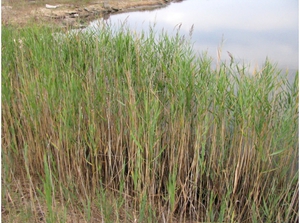 Ordinary. A plant with a strong root system and smooth stem. Has a light gray or greenish leaf tint. Bloom - June-September. Large panicle (up to 50 cm long and 15 cm wide).
Ordinary. A plant with a strong root system and smooth stem. Has a light gray or greenish leaf tint. Bloom - June-September. Large panicle (up to 50 cm long and 15 cm wide).- Hastate. Found in European countries, in shallow waters. The root is thick and contains a large amount of starch. The inflorescence is spike-shaped, brown in color.
- Sugar. It is very similar in appearance to bamboo.The stem is cylindrical in shape, can reach over 6 meters in height. Used for the production of cane sugar.
- Swamp. Found in swampy areas. The stem is smooth, rounded, reaching 4.5 m in length. The root system is powerful. The leaf is pointed, gray-green in color. Panicle-shaped inflorescence, dark purple color. Bloom - July-September.
- Wild. Perennial, smooth-stemmed plant, gray-green in color. Inflorescence of a silvery shade, collected in small spike-shaped panicles. This type of plant is closely related to the formation of peat. Occurs in forest and forest-steppe regions, near water bodies and on marshy soils.
In agriculture, common reed - malicious weed, spread over most of the irrigated land. Rice fields, cotton and alfalfa plantations were particularly affected. Drainage, multiple and deep tillage helps to fight the common reed.
Where is it used?
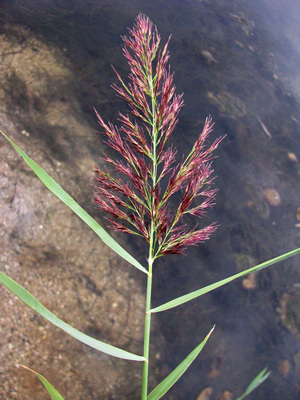 Application in medicine... In addition to its wide practical application, cane is also used in the medicinal field. According to the herbalists of the Siberian lands, decoctions from the shoots of the plant are very useful, helping in the treatment of cystitis, edema, colds and diseases associated with the prostate gland. The medicinal properties of common cane are manifested when mixed with highlander bird and sorrel. A decoction of shoots, it is useful to take in case of anemia, vitamin deficiency, as well as with a general breakdown. There are many beneficial properties in cane leaf spirit tincture. The powder made from the dried leaves of this plant is used to accelerate the healing of ulcers and festering wounds.
Application in medicine... In addition to its wide practical application, cane is also used in the medicinal field. According to the herbalists of the Siberian lands, decoctions from the shoots of the plant are very useful, helping in the treatment of cystitis, edema, colds and diseases associated with the prostate gland. The medicinal properties of common cane are manifested when mixed with highlander bird and sorrel. A decoction of shoots, it is useful to take in case of anemia, vitamin deficiency, as well as with a general breakdown. There are many beneficial properties in cane leaf spirit tincture. The powder made from the dried leaves of this plant is used to accelerate the healing of ulcers and festering wounds.- Culinary properties common reed. The stems of the young plant are quite edible and taste like asparagus. Rhizomes and young cane stalks are eaten raw, in a salad, pickled, baked, fried, and also ground and used instead of coffee. There are no specific contraindications associated with the use of this plant. But experts do not recommend using a large amount of flour based on it in culinary products because of the large amount of fiber in it.
Reed as a home for animals
In addition to being useful to people, this representative of the flora is of key importance for many representatives of wildlife. Plant serves as a shelter for small species of fish, crustaceans, many birds... For predators such as pike, perch, heron, this is a great place to hunt or breed. Many reptiles live exclusively in reeds, hiding in its dense thickets.
